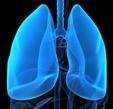Advertisment
Older patients achieve better outcomes with dual COPD therapy, especially those with asthma

by Bruce Sylvester – Compared with monotherapy with long-acting beta-agonists (LABAs), combination therapy with LABAs and inhaled corticosteroids (ICSs) among older adults with chronic obstructive pulmonary disease (COPD), has resulted in a lower risk of death or COPD hospitalization. The finding was particular strong for patients with asthma.
“Our finding of an association between LABAs and ICSs and outcomes helps clarify the management of patients with COPD and asthma, as many studies of COPD medications have excluded people with asthma and vice versa,” the authors said. The study was published in the September 17 issue of JAMA (Journal of the American Medical Association).
Andrea S. Gershon, M.D. of the Sunnybrook Health Sciences Centre and Institute for Clinical Evaluative Sciences, Toronto, Ontario and colleagues evaluated data in Ontario from 2003 to 2011 on persons ages 66 years or older with a validated diagnosis of COPD. They identified 8,712 new users of LABA-plus-inhaled corticosteroid therapy and 3,160 new users of LABAs only; they followed the subjects for a median of 2.7 years and 2.5 years, respectively.
They found the primary outcome, a composite of death and COPD hospitalizations, in 2,129 new users of LABAs (1,179 deaths/ 37.3 percent, and 950 COPD hospitalizations/30.1 percent) and in 5,594 new users of LABAs and ICSs (3,174 deaths/36.4 percent and 2,420 COPD hospitalizations/27.8 percent).
They found a modest but statistically significantly lower risk of the composite outcome among new users of LABAs and ICSs compared with new users of LABAs monotherapy.
Notably, the greatest difference was among COPD patients with a co-diagnosis of asthma (difference in composite at 5 years, -6.5 percent) and those who were not receiving inhaled long-acting anticholinergic medication (difference in composite at 5 years, -8.4 percent).





